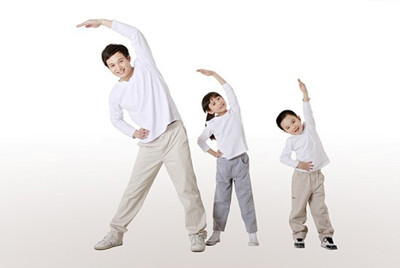(Ecns.cn)--Our bodies experience different physical stages at different ages in our lifetime, which requires adopting different exercises. Case in point: it isn't too hard for a 20-something to lose some weight, but it gets extremely challenging to lose weight in our 30s. Thus, it is recommended to take up exercises that suit your current age.
In your 20s
This is the golden period of one's physical body. Without a doubt it is also an age that needs proper exercise the most, since it will determine your body shape for the rest of your life.
Also, muscles in 20-something-bodies have substantial potential and can handle a certain level of exercise intensity. Weight lifting for a couple of minutes until your arms feel sore is a good idea.
It's still important to build up as much bone mineral density as possible at this age and hopping, running, jumping, as well as dancing, are ideal activities.
One magic and amazing thing about being a 20-something is that your body is too strong to get ruined, even after a staying up or partying all night. You can easily fully recover with simple exercises like one hour of yoga, or a casual walk for 30 minutes after work.
However, due to young people's obviously more irregular lifestyle, many in their 20s have already suffered troubles with their cardiovascular system. It is vital to do exercises like jogging, swimming, or bicycle riding on a daily basis.
In your 30s
Building muscle mass during your 30s can help you prevent muscle mass loss that may occur during the next two decades. It's advised by the American College of Sports Medicine that doing exercises incorporating all of your major muscle groups into two weekly strength-training sessions might work to build strong and healthy muscles. To achieve this, free weight exercises are highly recommended.
Holding free weights during exercise can force muscles to respond to and adapt to the physical demands placed on them. The exercise will work your primary and stabilizing muscles and will certainly result in high muscular usage and caloric expenditure. Bracing the abdominal and lower back region during biceps curls can stabilize your upper body while toning your midsection. Additional free-weight exercises include tricep extensions, bent-over rows, chest presses, and shoulder raises. To hold free weights while performing squats and lunges can increase the demands on the lower body's muscular system.
More importantly, this is the age when you might want to pay attention to those exercises that work on the body's flexibility. For example, callisthenic exercises are excellent choices, especially for those who are too busy to spare an afternoon sweating in a gym. Such exercises require no equipment and the body system works as external resistance during the workout. Therefore, it's easy to work out with simple sit-ups, waist-twists, as well as abdominal crunches either at home or in the office during a quick break. Additionally, foam rolling for 10 minutes before stretching and doing kneeling hip flexor stretches after can also work.
The second we turn 30, life becomes so much more different than that of our 20s, be it in a good way or a bad way. Many start to become more aware of taking care of our body with the limited time between home and work. It's healthy, but requires some good time management.
Riding a bike to the office if possible and taking the stairs instead of elevators in the office are convenient ways to keep fit and healthy at this age. If you can stick to the habit, it will save you lots of trouble during the next decade.


















